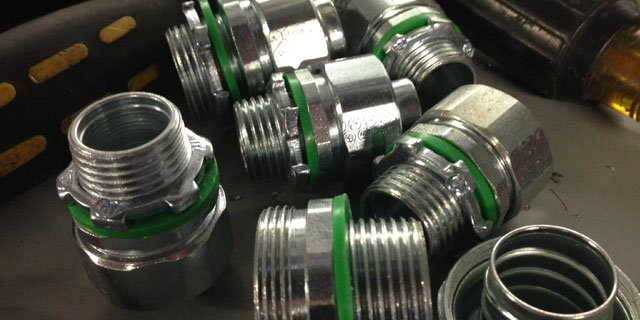 SealTite fittings may not be items that you would often see lying around the house, but it is highly likely that you have come across these materials before, albeit unknowingly. Perhaps you have watched your father setting up a sprinkler system for your home’s lawn or garden, or puzzled over a leak under your bathroom or kitchen sink with your spouse during your first year in a new apartment or house. Wherever conduits, piping and tubing are concerned, SealTite fittings are sure to be involved because they play an important role in their functionality.
SealTite fittings may not be items that you would often see lying around the house, but it is highly likely that you have come across these materials before, albeit unknowingly. Perhaps you have watched your father setting up a sprinkler system for your home’s lawn or garden, or puzzled over a leak under your bathroom or kitchen sink with your spouse during your first year in a new apartment or house. Wherever conduits, piping and tubing are concerned, SealTite fittings are sure to be involved because they play an important role in their functionality.
What are they?
Fittings enable sections of straight tubes or pipes to adapt to the size and shape of a space or regulate the flow of the substance that courses through it. Thanks to these materials, a pipeline is able to run around a sharp corner, over a ceiling, or under a piece of property uninterrupted.
If, for example, a pipe needs to be laid down in your property and it comes to dead end at a corner, the end of the pipe will be cut short before that corner and an elbow fitting with a 90-degree bend will be placed at that pipe end, so that another section of pipe can be attached to the fitting to continue the pipeline.
What are they made of?
There are fittings available in plastic ABS (Acrylonitrile Butadiene Styrene), Chlorinated Polyvinyl Chloride, steel, nickel, or copper, and their use will depend on their intended applications (either plumbing or piping).
In general, plumbing applications include conventional commercial or domestic conveyances of water, liquid or gas wastes. Piping, on the other hand, refers to more specialized applications, often involving high-pressure, high-temperature or hazardous materials, like harsh industrial materials, salt water, petro-chemical substances, and other corrosives.
How are they installed?
Fittings can be attached to pipes or tubing either through slip fit (using sleeves that fit into one another) or threads (screwing pieces together in order to connect). Connectors are classified as male and female. Plastic pipes can use either slip fit or threads, while metal pipes utilize threads only.
To secure fittings, different kind of sealers can be used to ensure a strong attachment and to prevent leaks. Threaded types are typically sealed with sealing or plumber’s tape, wrapped tightly over the male threads over and over before connecting them to the female threads. For slip fit fittings, a quick-drying solvent cement is used; it works to melt the fittings into one another.
The choice of fittings and sealing options must take into consideration the need, should there be any, to disassemble the pipeline in the future, because using slip fit fittings with cement prevents diss assembly, while threaded pipes can be dismantled.
Relying on the experts
Choosing and installing fittings must be done by professionals to ensure that you are getting the right type of materials for the right projects. It is recommended that you purchase your SealTite fittings from reputable online suppliers who can deliver top quality products and offer valuable assistance with any questions you may have.
